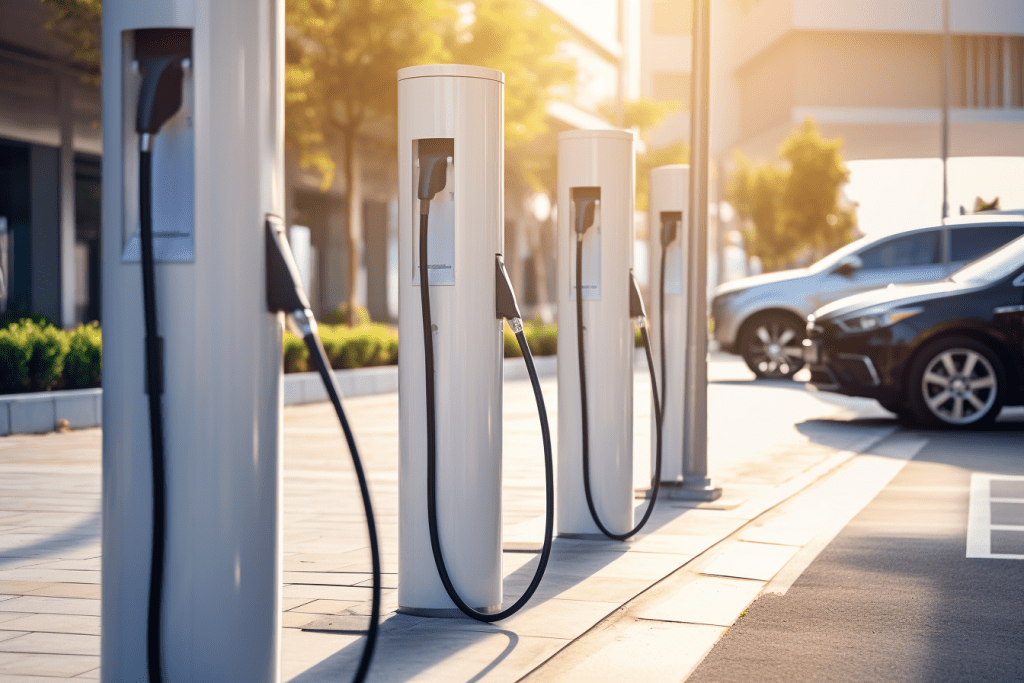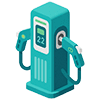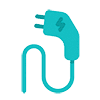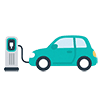
NEWS CENTER
Timing Your Charge and Monitoring Battery Levels—This Approach to Charging Your Car Promotes Better Battery Health.
Battery life varies dramatically—some maintain over 90% health after three years, while others drop below 80%! The key lies in mastering scientific charging strategies and maintenance techniques. This article combines the latest industry data and engineer recommendations to help you avoid battery lifespan traps.
I. Charging Timing: Mastering the “Golden Range” and Temperature Thresholds
1. Charge Level Management: 20%-80% is the Lifespan Core
Daily Commuting: Maintaining charge levels between 20%-80% significantly reduces battery degradation. Field tests show owners consistently charging to 90% maintained 92% battery health after 3 years, while frequent full-charge users dropped to 85%.
Long-Distance Scenarios: Temporarily charging to 100% is acceptable, but immediately discharge below 90% upon arrival. Avoid storing at full charge for over 24 hours (ternary lithium) or 72 hours (lithium iron phosphate).
Low Charge Warning: Recharge immediately below 20%! Deep discharges (<10%) accelerate electrode crystallization, reducing cycle life by 50%.

2. Temperature Management: Survival Techniques for Extreme Conditions
Winter Charging (below -10°C):
Preheat: Remotely activate battery heating via the app, or drive for 10 minutes before charging.
Prioritize Underground Garages: At -20°C, battery capacity degrades by 40%. Underground charging maintains 15% more capacity.
Summer Charging (>35°C):
Avoid Direct Sunlight: Let the battery cool for 1 hour after exposure before charging. High-temperature charging accelerates electrolyte decomposition by 84%.
Enable Active Cooling: Some models support activating air conditioning cooling during charging (e.g., Tesla’s heat pump system) to prevent battery overheating.
II. Charging Station Selection: Balancing Fast and Slow Charging
1. Slow Charging is “Nurturing Care,” Fast Charging is “Emergency Treatment”
Slow Charging (Home Charging Station):

Advantages: Stable current (≤0.5C), excellent heat control, annual degradation rate of only 3%.
Tip: Utilize off-peak electricity (after 10 PM) to reduce costs by 40%.
Fast/Ultra-Fast Charging:
Risks: Current exceeds 100A, battery temperature surges to 50°C, annual degradation rate reaches 8%.
Safe Frequency: ≤3 times per month. After two consecutive fast charges, balance voltage with slow charging.
Case Study: XPeng S4 supports 210km range in 5 minutes via ultra-fast charging. However, engineers explicitly state: frequent ultra-fast charging accelerates degradation over time. Combine with slow charging.
2. Charging Station Pitfall Avoidance Guide Prioritize OEM Chargers: Non-certified chargers carry a 35% higher risk of voltage fluctuations and may trigger BMS protection.
Rain Protection:
Select stations with IP55+ waterproofing (e.g., Xpeng’s liquid-cooled gun reaches IP67). Drainage structures at charging ports prevent short circuits.
Avoid outdated public stations (sealing rings may deteriorate).
Power Monitoring: If power fluctuates abnormally during fast charging (e.g., sudden drop from 70kW to 20kW), it may indicate battery overheating. Stop charging immediately.

IV. Six Hidden Tips to Extend Battery Life
- Driving Habits:
Smooth Acceleration: Sudden acceleration draws over 100A (equivalent to 4 times fast charging), reducing range by 10%-15%.
Energy Recovery: Set to medium mode in urban areas; use high mode on long descents to recover 30% kinetic energy. - Long-Term Storage Strategy:
Maintain charge between 50%-70%. Disconnect the negative terminal of the auxiliary battery to prevent power theft.
Start the vehicle once a month and drive 20 kilometers to prevent battery “hibernation shock.” - Hardware Maintenance:
Tires: Rotate every 10,000 km. Tire pressure deviation of ±0.1 Bar accelerates wear by 30%.
Cooling System: In northern regions, replace antifreeze every 2 years (freezing point ≤-25°C). Clean radiator vents monthly. - Software Updates:
Promptly install manufacturer BMS upgrade packages (e.g., BYD Han upgrades boost range by 5%). - Safety Red Lines:
Stop immediately if water depth exceeds 15cm (battery pack height approx. 12-15cm). Inspect insulation within 48 hours after wading.
Never jump-start with a gasoline vehicle! Voltage differences may burn out the electronic control module (repair cost ≥ ¥20,000). - Regular Deep Inspections:
Check battery voltage difference every 10,000 km (repair required if >50mV). Conduct annual State of Health (SOH) diagnostics (battery balancing required if SOH <85%).


































.png) PV-Storage-Charging
PV-Storage-Charging-1.png) High & Low Voltage Switchgear
High & Low Voltage Switchgear Company Profile
Company Profile News Information
News Information Service Support
Service Support Cloud Platform Customized Development
Cloud Platform Customized Development Leisheng Charging International Platform
Leisheng Charging International Platform Leisn Home Charging Platform
Leisn Home Charging Platform